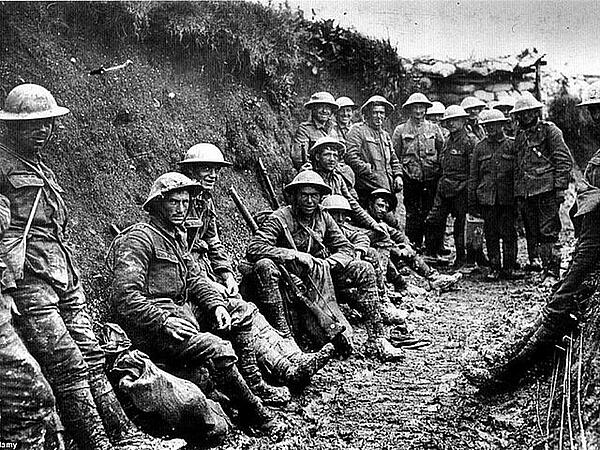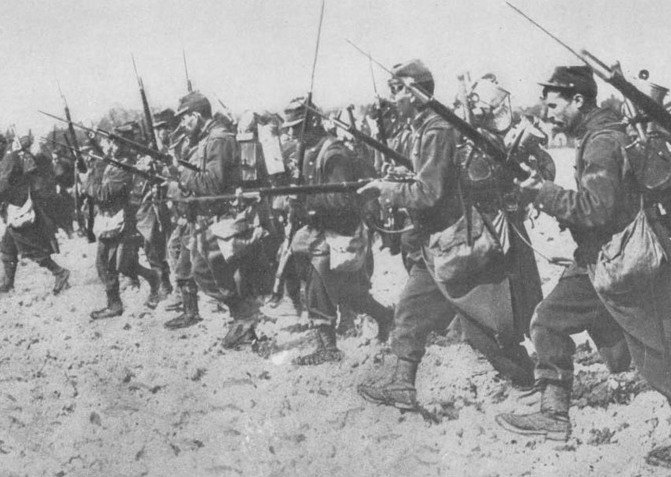Well, I thought the same as everybody else. Everybody said ‘It’ll be over by Christmas and you’ve got to get out soon, otherwise you won’t see anything’. But I don’t know if it was my opinion, or if everybody was saying it. One certainly changed one’s mind when we found how well-organised Jerry was compared with us for instance.
Bill Haine, a British Soldier in WW1
Despite what many claimed at home, the war was not over by Christmas. Winter was setting in and the fighting had slowed even more than before. Whilst the Christmas Truce of 1914 is seen as a unique one, ceasefires had been occurring all over the Western Front. A “turn a blind eye” attitude was becoming common place, despite orders from command. The harsh winter was also getting to the soldiers. The feeling of the first Christmas away from home was beginning to set in so gifts were sent. Kaiser Wilhelm sent cigars for the officers and pipes for the ranks while Princess Mary of Harewood sent out cigarettes, sweets and cards.
On Christmas Eve, the rain that had been flooding trenches for weeks had finally stopped, and the ice froze the floor of the trenches over, reducing the risk of trench foot significantly. Soon, snow fell upon No Mans Land and the gun fire slowly but surely dwindled into silence. Filled with merriment and joy, the German’s began to sing Silent Night in their trenches. The British officers, hearing this, believed it to be a challenge and began singing their own carols back at the Germans. However, what began as a competition eventually turned into a harmonisation of English and German voices. Many officers met by the wire, agreeing not to exchange gunfire the next day. However, such friendliness was not shared with the French or Belgian troops, as they were under occupation by the Germans at the time. However, they did agree to stop shooting in order to bury their dead.
Christmas Day came. Many British soldiers looked over the parapet to see German Soldiers standing upright in No Mans Land. The two sides got out and buried their dead. The two sides found they shared a communal experience, of having had their friends die and being sick of the war. Extra gifts given to them by their wives and families were exchanged. One notable exchange was between Captain Edward Hulse of the Scots Guard and Lieutenant Thomas of the 15th Westphalians. Thomas gave Hulse a Victoria Cross and a series of letters belonging to an officer who had been killed in a German trench in a previous attack, hoping to have them returned to his family. Touched by his empathy, Hulse gave Thomas his scarf he had received the night prior. Not having anything to give back, Thomas ordered a German troop to find the gloves given to him by his family in order to give them to Hulse. Unfortunately, Hulse ended up being killed in action the following April at the Battle of Neuve-Chappelle while trying to help his commanding officer. Thomas’ fate remains unknown

The most famous part of this truce were the football matches played between the two sides. Both sides brought out their own footballs, playing kick-about between the two trenches. However, not all was done with best intentions. This time of peace was used to repair dugouts and spy on the enemy. Some were cautious, with incidents of people spotting daggers being drawn and British soldiers not wanting to smoke German cigarettes for fear of poisoning.
Eventually, high command stepped in, fearing that the war would not go on if their troops knew their enemy as people. For some, the armistice was swift and done with by Boxing Day. Others carried on, pushing until New Years Eve. German command dispatched snipers whilst the French ordered artillery barrages. For high command, they believed the war machine had to go on and all human connection must be stamped out. There was never another ceasefire like this, not just in this war but any war since then.










